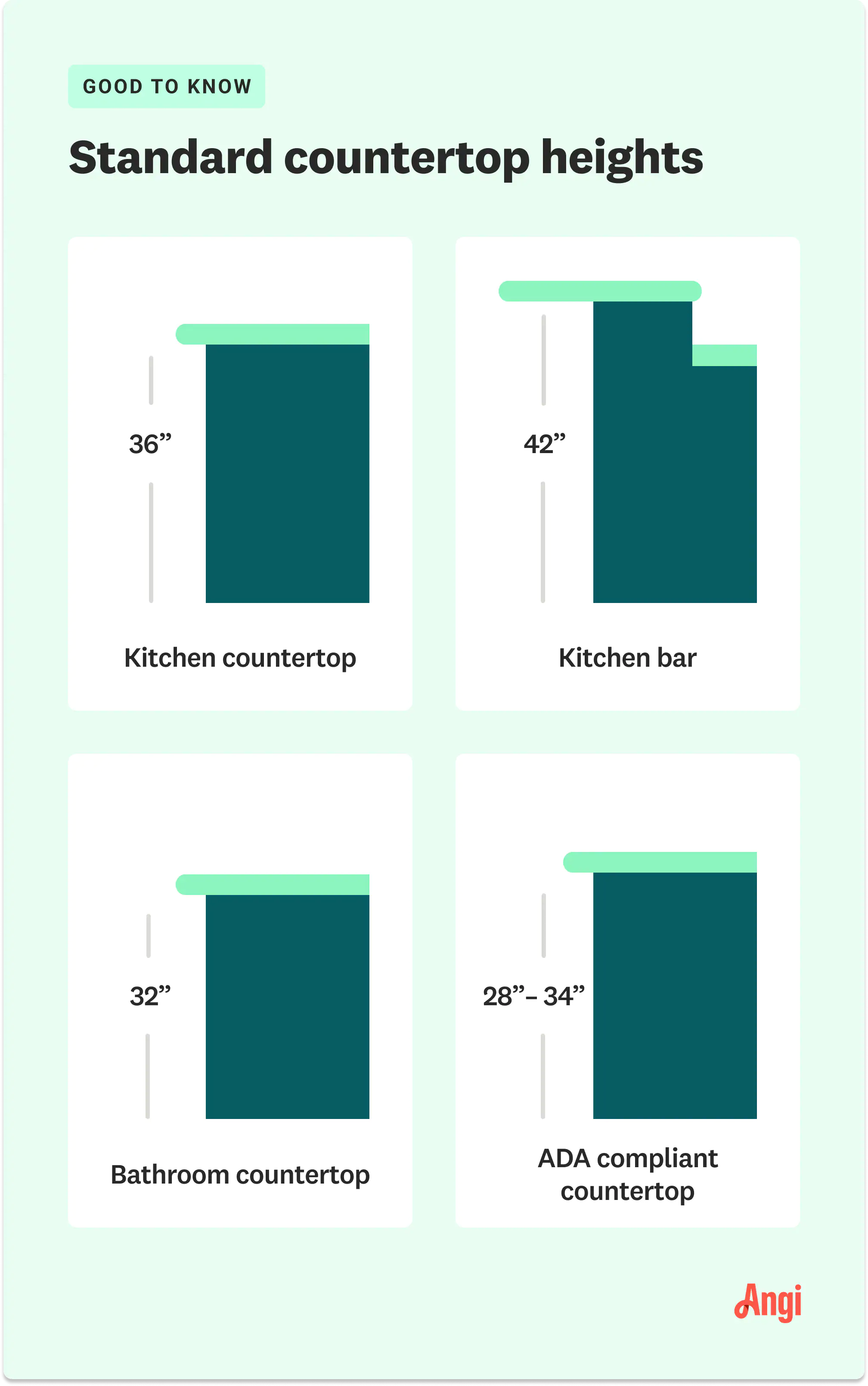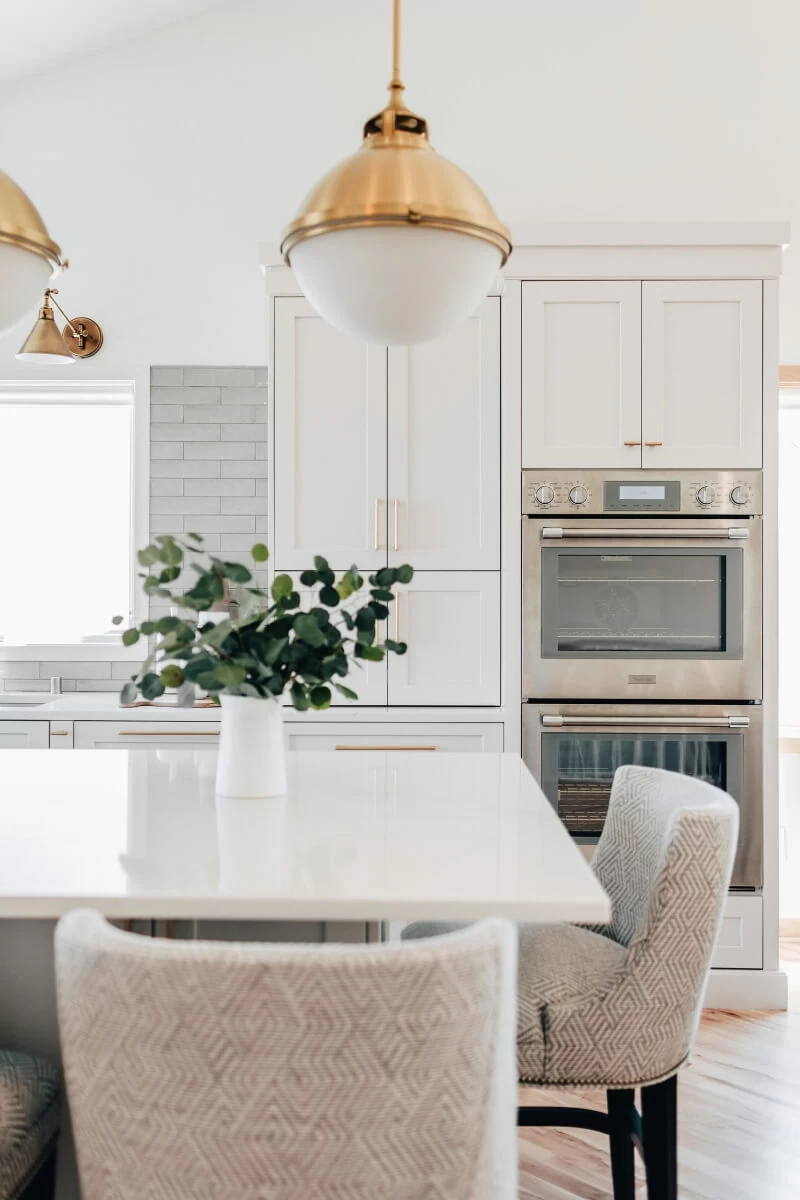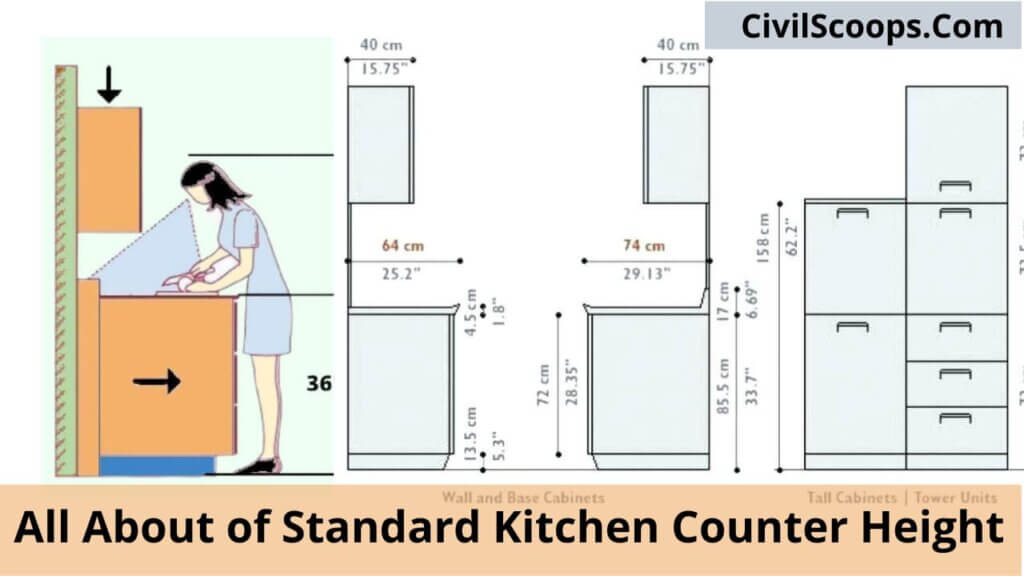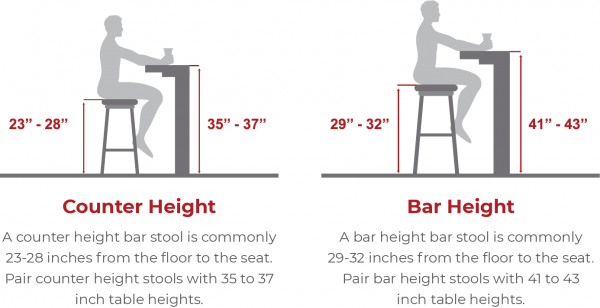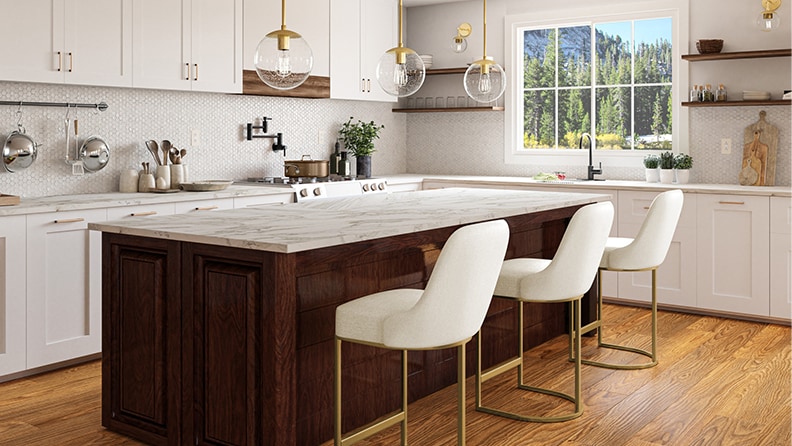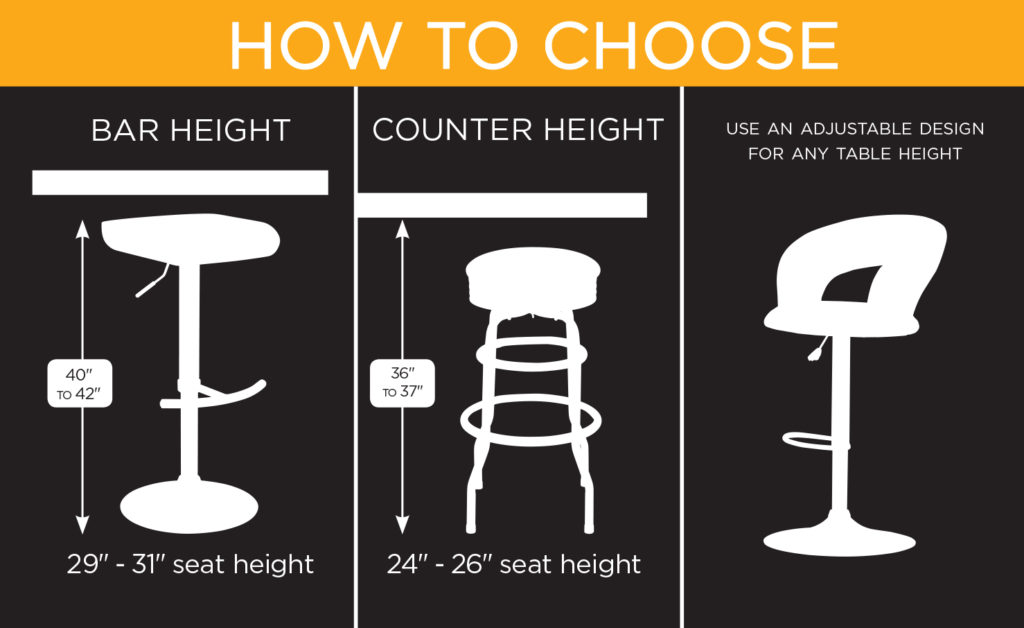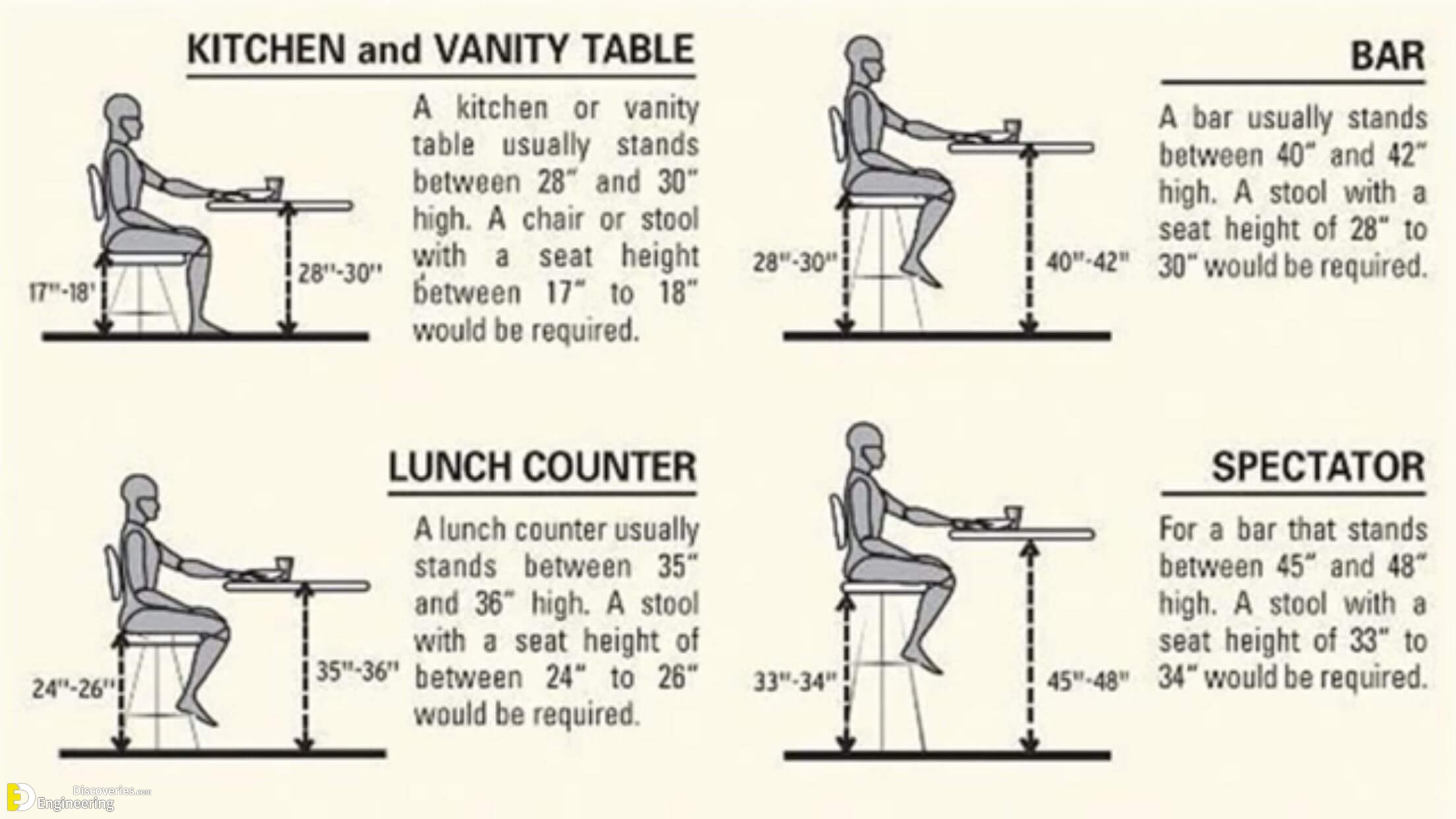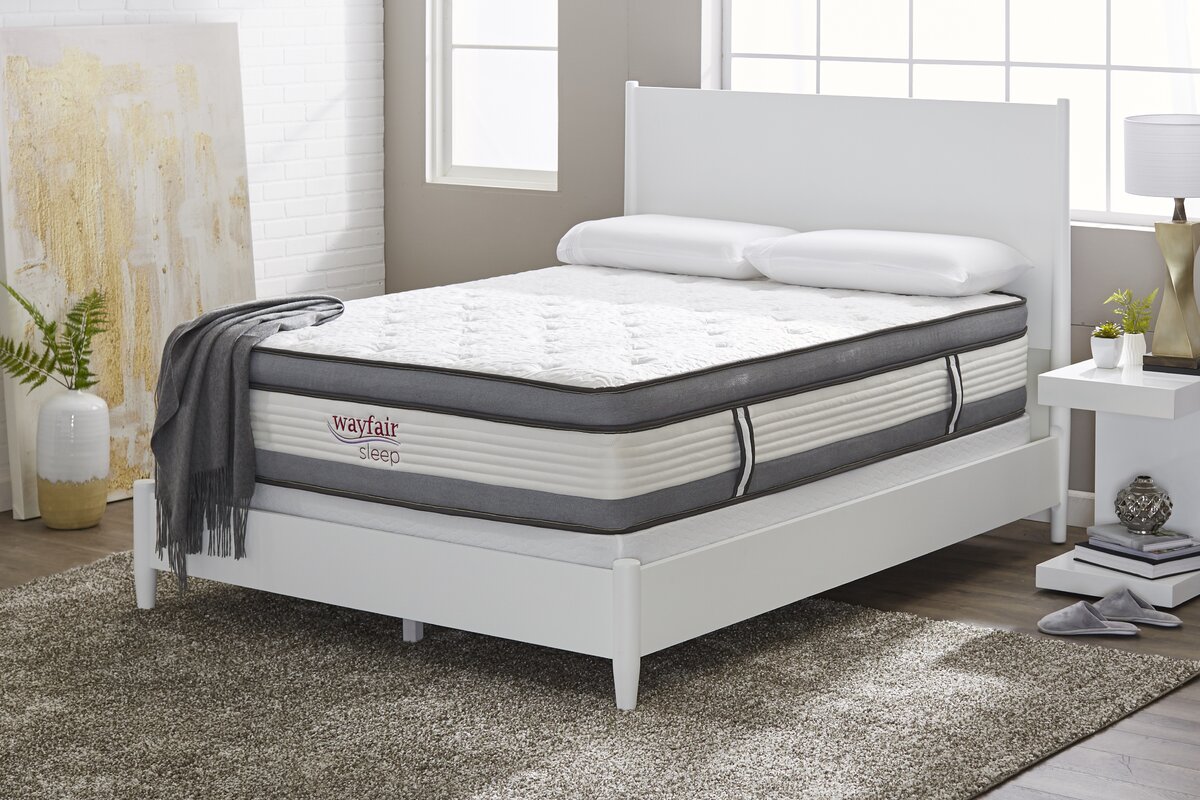When it comes to designing your kitchen, one important decision to make is the height of your counters. While there are standard measurements for kitchen counter height and bar height, the two differ significantly. Understanding the difference between them is crucial in determining which option is best for your kitchen. Kitchen counter height refers to the standard height of kitchen counters, which is typically 36 inches. This measurement is ideal for food prep and cooking, as it allows for comfortable standing and working positions. Most kitchen appliances, such as stoves and refrigerators, are also designed to fit this height. Bar height, on the other hand, is taller than kitchen counter height, usually ranging from 40 to 42 inches. This height is commonly seen in bars and restaurants, where people sit on bar stools to eat and drink. However, bar height can also be used in residential kitchens, especially in open-concept spaces.Standard Kitchen Counter Height vs. Bar Height: What's the Difference?
One of the main differences between bar height and counter height is the type of stools used. Bar height stools are taller and have longer legs to accommodate the extra height of the bar. They also have a higher footrest to provide support for the legs. On the other hand, counter height stools are shorter and have shorter legs to fit the standard 36-inch counter height. They also have a lower footrest, as people are able to rest their feet on the floor while sitting. When choosing between bar height and counter height stools, consider the overall aesthetic and functionality of your kitchen. Bar height stools can add a more casual and modern vibe, while counter height stools are better suited for a traditional and cozy look.Bar Height vs Counter Height Stools: What's the Difference?
Another important consideration when deciding between bar height and counter height is the type of table that will be used. Bar height tables are taller than counter height tables, usually measuring 42 inches. They are designed to be used with bar height stools, providing a comfortable sitting position for eating and drinking. Counter height tables, on the other hand, are typically 36 inches in height. They are designed to be used with counter height stools, providing a comfortable dining experience. Counter height tables are also more versatile, as they can be used for both dining and food prep, making them a popular choice for smaller kitchens.Bar Height vs Counter Height Tables: What's the Difference?
In addition to stools, chairs are also an important consideration when deciding between bar height and counter height. Bar height chairs are taller and have higher backs to provide support for people sitting at a bar height table. They also have a taller seat height to accommodate the extra height of the table. Counter height chairs, on the other hand, are shorter and have lower backs to fit the standard counter height. They also have a lower seat height, making them more comfortable for extended periods of sitting. Counter height chairs are also a popular choice for kitchen islands, as they provide a comfortable seating option for both dining and socializing.Bar Height vs Counter Height Chairs: What's the Difference?
When it comes to entertaining, the decision between bar height and counter height depends on your personal preference and the style of your kitchen. Bar height is great for hosting parties and gatherings, as it provides a more casual and social atmosphere. Guests can stand and mingle around the bar area, making it easier to interact and socialize. On the other hand, counter height is better suited for formal dinners and sit-down meals. It provides a more traditional and intimate setting for guests to enjoy a meal together. Counter height tables also offer more space for food and drinks, making it easier to serve and enjoy a meal with family and friends.Bar Height vs Counter Height: Which is Better for Entertaining?
When it comes to small spaces, counter height is usually the better option. This is because counter height tables and chairs take up less space than bar height tables and stools. If you have a small kitchen or dining area, counter height can help maximize the space and make it feel bigger. However, if you have a larger kitchen or open-concept space, bar height can add a more spacious and modern feel. It can also create a designated area for socializing and entertaining, making it a great choice for larger homes.Bar Height vs Counter Height: Which is Better for Small Spaces?
Comfort is an important factor to consider when choosing between bar height and counter height. Generally, counter height is more comfortable for longer periods of sitting. This is because the lower seat height allows for proper foot placement, reducing strain on the legs and back. However, some people may find bar height more comfortable, as they prefer to sit on taller stools. It ultimately depends on individual preferences and the purpose of the seating area. For example, if you plan on using the space for meals and socializing, counter height may be the better choice. But if you plan on using the space for quick drinks and snacks, bar height may be more suitable.Bar Height vs Counter Height: Which is More Comfortable?
Both bar height and counter height have their own unique benefits and uses, making them both versatile options for your kitchen. Bar height is great for casual dining and entertaining, while counter height is better suited for formal dining and food prep. However, if you want a more versatile option, counter height is generally the better choice. It can be used for a variety of purposes, such as dining, food prep, and even as a workspace. It also works well in both small and large spaces, making it a practical choice for any kitchen.Bar Height vs Counter Height: Which is More Versatile?
The popularity of bar height and counter height varies depending on personal preferences and trends. In the past, counter height was the more popular option, as it was seen as the standard kitchen height. However, in recent years, bar height has become increasingly popular, especially in open-concept homes and modern kitchens. Ultimately, the choice between bar height and counter height should be based on your personal preferences and the style of your kitchen. Don't be afraid to go against the trend and choose the option that best fits your needs and taste.Bar Height vs Counter Height: Which is More Popular?
When it comes to functionality, both bar height and counter height have their own advantages. Bar height is great for socializing and entertaining, while counter height is better suited for dining and food prep. However, if you want a more functional option, counter height is generally the better choice. It can be used for a variety of activities, from cooking and dining to working and socializing. It also provides more storage and workspace, making it a practical choice for busy kitchens.Bar Height vs Counter Height: Which is More Functional?
The Debate between Kitchen Bar Height and Counter Height in House Design

The Importance of Choosing the Right Height in Kitchen Design
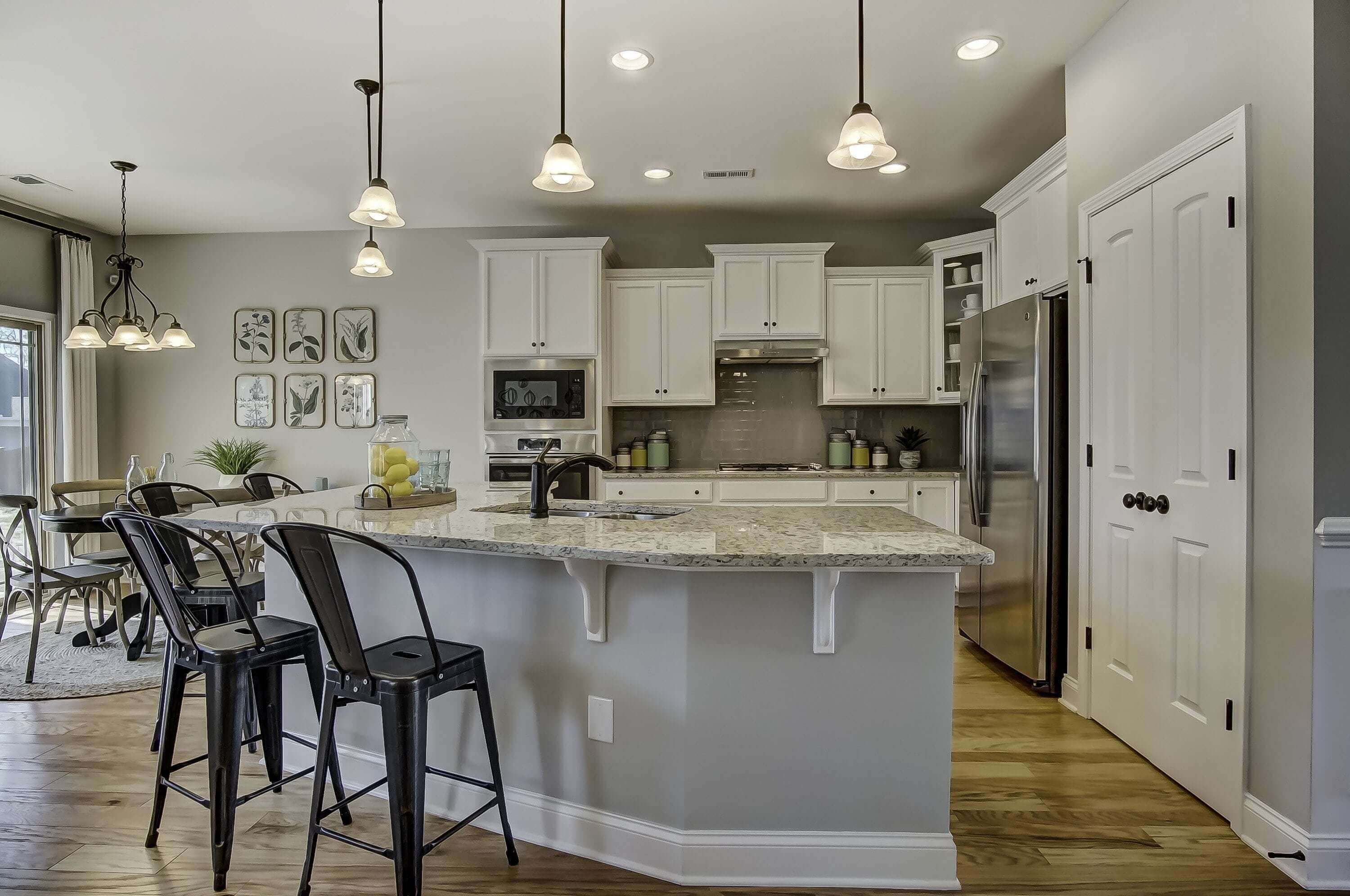 When it comes to designing a kitchen, there are many factors to consider. From the layout to the color scheme, every decision plays a crucial role in creating a functional and aesthetically pleasing space. One particular aspect that often causes confusion is the height of the kitchen bar or counter. While some homeowners prefer a higher bar height, others opt for a lower counter height. This has led to an ongoing debate between kitchen bar height and counter height in house design.
Kitchen Bar Height: A Trendy and Modern Choice
In recent years, kitchen bar height has become a popular choice among homeowners and designers alike. This taller option, typically around 42 inches, offers a sleek and modern look to a kitchen. It also allows for bar stools to be placed underneath, creating a casual and inviting atmosphere for guests to gather around. Additionally, a higher bar height can add dimension and visual interest to the kitchen, making it a focal point of the room.
Counter Height: A Practical and Functional Option
On the other hand, counter height, which is typically around 36 inches, offers a more traditional and practical approach to kitchen design. This height allows for easier food prep and cooking, as well as comfortable seating at the counter for dining. It also tends to be a more budget-friendly option, as it requires less material and labor to build. For families with young children or those with mobility issues, a lower counter height may also be a safer and more accessible choice.
The Verdict: It All Comes Down to Personal Preference
At the end of the day, the decision between kitchen bar height and counter height ultimately boils down to personal preference. Both options offer their own unique benefits, and it is important to consider your specific needs and lifestyle when making a decision. Some homeowners may even choose to incorporate both heights in their kitchen design, with a raised bar area for entertaining and a lower counter for everyday use.
In conclusion, the debate between kitchen bar height and counter height in house design will likely continue as both options have their own advantages. It is important to carefully consider the functionality, style, and budget of your kitchen when making this decision. Whichever height you choose, make sure it aligns with your overall vision for your home and creates a space that you and your family will love for years to come.
When it comes to designing a kitchen, there are many factors to consider. From the layout to the color scheme, every decision plays a crucial role in creating a functional and aesthetically pleasing space. One particular aspect that often causes confusion is the height of the kitchen bar or counter. While some homeowners prefer a higher bar height, others opt for a lower counter height. This has led to an ongoing debate between kitchen bar height and counter height in house design.
Kitchen Bar Height: A Trendy and Modern Choice
In recent years, kitchen bar height has become a popular choice among homeowners and designers alike. This taller option, typically around 42 inches, offers a sleek and modern look to a kitchen. It also allows for bar stools to be placed underneath, creating a casual and inviting atmosphere for guests to gather around. Additionally, a higher bar height can add dimension and visual interest to the kitchen, making it a focal point of the room.
Counter Height: A Practical and Functional Option
On the other hand, counter height, which is typically around 36 inches, offers a more traditional and practical approach to kitchen design. This height allows for easier food prep and cooking, as well as comfortable seating at the counter for dining. It also tends to be a more budget-friendly option, as it requires less material and labor to build. For families with young children or those with mobility issues, a lower counter height may also be a safer and more accessible choice.
The Verdict: It All Comes Down to Personal Preference
At the end of the day, the decision between kitchen bar height and counter height ultimately boils down to personal preference. Both options offer their own unique benefits, and it is important to consider your specific needs and lifestyle when making a decision. Some homeowners may even choose to incorporate both heights in their kitchen design, with a raised bar area for entertaining and a lower counter for everyday use.
In conclusion, the debate between kitchen bar height and counter height in house design will likely continue as both options have their own advantages. It is important to carefully consider the functionality, style, and budget of your kitchen when making this decision. Whichever height you choose, make sure it aligns with your overall vision for your home and creates a space that you and your family will love for years to come.
